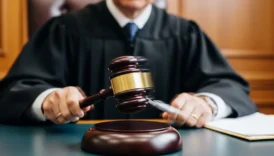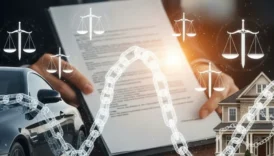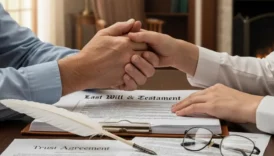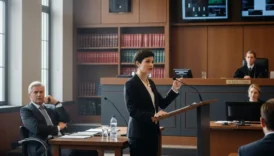What Is Legal Replevin?

- What Is Legal Replevin?
- Meaning of Replevin in Law
- Legal Foundation and Procedure of Replevin
- Key Legal Features:
- General Process (U.S. Model):
- How Replevin Works in Practice
- Real-World Examples and Statutory Variations
- Example 1 – Commercial Equipment
- Example 2 – Consumer Finance (Vehicle Repossession)
- Example 3 – Livestock or Agricultural Property
- Statutory Differences
- Why Replevin Matters in Legal Practice
- Key Advantages
- Societal Importance
- Limitations and Modern Applications
- Common Limitations
- Modern Challenges
- Best Practices for Lawyers
- FAQ
- What is the main purpose of legal replevin?
- How does replevin differ from conversion?
- Is replevin available for all types of property?
- What must a plaintiff prove in a replevin action?
- What is a replevin bond and why is it required?
- Can replevin be filed before a full trial?
- What happens if the defendant refuses to comply with a replevin order?
- Is replevin used in modern business disputes?
- Can replevin apply to digital or electronic property?
- Why is replevin important in law?
Simple definition of legal replevin: a legal action that allows a person to recover personal property that has been wrongfully taken or detained by another, before or without the final judgment of ownership. It focuses on possession, not ownership, giving the rightful possessor the ability to regain their goods while the court resolves the dispute.
“Replevin is the law’s way of saying: give it back—at least until we decide who truly owns it.”
Meaning of Replevin in Law
Replevin is a civil remedy rooted in common law, designed to help individuals recover tangible personal property (not real estate or money) that’s been wrongfully held by someone else. Unlike conversion, which awards money damages for lost property, replevin seeks the return of the item itself.
The person seeking replevin is the plaintiff, and the person holding the property is the defendant. The court can order the immediate return of the property if the plaintiff proves probable ownership or lawful possession, sometimes even before the case is fully resolved.
This action is especially useful when the property is unique or irreplaceable, such as vehicles, artworks, equipment, or livestock. Replevin ensures that the rightful holder regains use or control while ownership questions are litigated.
Common scenarios include:
- A buyer who paid for goods but never received them.
- A lender repossessing property after a borrower defaults.
- A business recovering leased equipment wrongfully retained after a contract ends.
- A pet owner reclaiming an animal wrongfully kept by another.
In essence, replevin balances possession rights and due process, preventing unfair deprivation of property while respecting legal procedure.
Legal Foundation and Procedure of Replevin
Replevin’s origins date back to medieval English law, where it protected land tenants from wrongful seizures by landlords. Modern statutes preserve the same principle: possession cannot be taken without lawful justification.
Key Legal Features:
- Purpose: To recover property wrongfully taken or detained.
- Scope: Applies only to personal property, not real estate.
- Immediate Remedy: The court may order return of property before final judgment.
- Bond Requirement: Plaintiffs often post a bond or security to protect defendants if the claim fails.
- Final Judgment: Confirms who rightfully possesses the property and may include damages.
General Process (U.S. Model):
| Stage | Description |
|---|---|
| 1. Filing the Complaint | Plaintiff files a replevin action identifying the property, value, and wrongful detention. |
| 2. Court Review | Judge examines the claim and may require a replevin bond. |
| 3. Prejudgment Seizure | Court issues an order allowing law enforcement to seize and return the property. |
| 4. Hearing or Trial | Both parties present evidence of ownership or right to possession. |
| 5. Final Judgment | The court determines rightful possession and may award damages for wrongful detention. |
The process ensures fairness: no one loses possession permanently without a proper hearing, and no one holds another’s property without justification.
How Replevin Works in Practice
In practice, replevin is often used when monetary compensation is insufficient. For example, if a contractor wrongfully retains a client’s specialized tools or a dealership refuses to release a financed vehicle, the rightful possessor can seek a replevin order for immediate recovery.
Example 1 — Vehicle Recovery:
A bank finances a car loan, and the borrower defaults. The bank files a replevin action, posting a bond for the vehicle’s value. The court authorizes law enforcement to repossess the car pending final judgment.
Example 2 — Equipment Lease Dispute:
A company leases machinery to a subcontractor. When the lease expires, the subcontractor refuses to return it. The leasing company sues for replevin to recover the equipment quickly rather than waiting for full trial damages.
Example 3 — Wrongfully Taken Goods:
An art collector lends a sculpture for exhibition. The gallery refuses to return it afterward. The collector files for replevin, and the court issues a writ ordering immediate return of the sculpture.
Replevin ensures that possession aligns with fairness until the legal question of ownership is resolved.
Real-World Examples and Statutory Variations
While the principle of replevin is universal—returning wrongfully detained property—the specific procedures and names differ across jurisdictions.
Some states use claim and delivery or detinue as equivalents, but the essence remains the same: a court-supervised recovery of possession.
Example 1 – Commercial Equipment
A printing company leases industrial presses to a contractor. When the lease ends, the contractor refuses to return them, claiming unpaid invoices.
→ The lessor files for replevin, posting bond and proving ownership.
→ The sheriff retrieves the machines, returning them to the lessor pending trial.
Example 2 – Consumer Finance (Vehicle Repossession)
After loan default, a bank may lawfully recover the financed car through a replevin order, not self-help repossession, ensuring due process.
Example 3 – Livestock or Agricultural Property
Farmers often invoke replevin to reclaim animals or equipment seized under disputed liens or mistaken debt collection.
Statutory Differences
| Jurisdiction | Typical Term Used | Unique Feature |
|---|---|---|
| U.S. (State Level) | Replevin / Claim & Delivery | Requires bond and affidavit before seizure |
| U.K. | Detinue (now merged with conversion) | Focuses on wrongful detention, damages substitute |
| Canada | Replevin (Provincial Statutes) | Sheriff executes court order for return |
| Civil-Law Systems | Action en réintégrande / restitutio | Emphasizes possession protection rather than ownership |
Although names vary, the underlying goal—swift, lawful recovery of property—remains consistent.
Why Replevin Matters in Legal Practice
Replevin plays a crucial role in balancing property rights, procedural fairness, and efficiency.
It prevents economic loss from prolonged deprivation and limits vigilante repossession, ensuring disputes are resolved within the judicial system.
Key Advantages
- Speedy Remedy: Possession can be restored early through prejudgment seizure.
- Preservation of Property: Prevents deterioration or misuse while litigation continues.
- Legal Accountability: Courts, not individuals, oversee recovery, preventing self-help abuse.
- Fairness: Both parties are heard—protecting owners and possessors alike.
Replevin is often the first tactical move in property disputes: regaining possession shifts leverage during settlement or trial.
Attorneys emphasize it when the client’s business depends on immediate access to seized goods, machinery, or intellectual-property prototypes.
Societal Importance
By formalizing recovery, replevin discourages private retaliation and promotes public order.
It exemplifies how civil procedure can replace confrontation with due process, maintaining trust in courts as neutral arbiters of property rights.
Limitations and Modern Applications
Despite its effectiveness, replevin has limits and evolving interpretations—particularly in technology-driven and globalized commerce.
Common Limitations
- Applicability: Only tangible personal property qualifies—money, real estate, or intangible rights (like digital data) usually do not.
- Bond Costs: Requiring plaintiffs to post security can deter small claimants.
- Jurisdictional Complexity: Multistate or cross-border possession issues complicate enforcement.
- Risk of Abuse: Wrongful or premature replevin can harm innocent possessors.
Modern Challenges
- Digital Property: Courts debate whether electronic devices or data storage qualify as “personal property” for replevin purposes.
- International Trade: Global supply chains complicate identifying where wrongful detention occurs.
- Automated Enforcement: Use of tracking devices and remote locks in repossession raises privacy and due-process concerns.
Best Practices for Lawyers
- Draft precise affidavits identifying property and value.
- Clearly distinguish between ownership and possession claims.
- Evaluate whether alternative remedies (like conversion or detinue) are more suitable.
- Ensure compliance with statutory notice and bond requirements.
Ultimately, replevin remains a vital procedural safeguard—a centuries-old doctrine continually adapting to modern disputes over possession and control.
FAQ
What is the main purpose of legal replevin?
Replevin allows a person to recover personal property that has been wrongfully taken or detained. Its purpose is to restore possession of the actual item, rather than merely compensating for its value in money damages.
How does replevin differ from conversion?
Conversion provides monetary damages for lost or stolen property, while replevin seeks return of the property itself. Replevin focuses on possession; conversion focuses on compensation after loss.
Is replevin available for all types of property?
No. Replevin applies only to tangible personal property—movable items like vehicles, tools, animals, or equipment. It cannot be used for real estate, money, or intangible assets such as data or intellectual property.
What must a plaintiff prove in a replevin action?
The plaintiff must demonstrate:
A right to possess the property,
Wrongful detention by the defendant, and
A clear description and value of the property.
Courts may also require a bond before issuing a replevin order.
What is a replevin bond and why is it required?
A replevin bond is a financial guarantee the plaintiff posts before property is seized. It protects the defendant against loss if the plaintiff’s claim is later found invalid.
Can replevin be filed before a full trial?
Yes. Courts may authorize prejudgment replevin—temporary return of the property—if there’s strong evidence of wrongful detention. However, this requires strict procedural safeguards to prevent abuse.
What happens if the defendant refuses to comply with a replevin order?
Law enforcement, typically the sheriff, enforces the court’s order by seizing and returning the property to the plaintiff. Noncompliance can result in contempt of court or additional penalties.
Is replevin used in modern business disputes?
Frequently. It’s common in finance, leasing, and secured transactions—such as recovering vehicles, equipment, or goods sold under installment contracts. It also applies to personal disputes like recovering pets or loaned items.
Can replevin apply to digital or electronic property?
Usually not. Most statutes limit replevin to physical items. However, courts are beginning to explore similar remedies for digital assets where tangible storage devices are involved.
Why is replevin important in law?
Because it provides a fair and lawful way to recover property without resorting to self-help or force. Replevin preserves order, prevents wrongful possession, and ensures due process in property recovery disputes.
Author: Legal Terms
Last Updated: October 2025
Disclaimer: This article provides general educational information about legal replevin procedures. It does not constitute legal advice.






